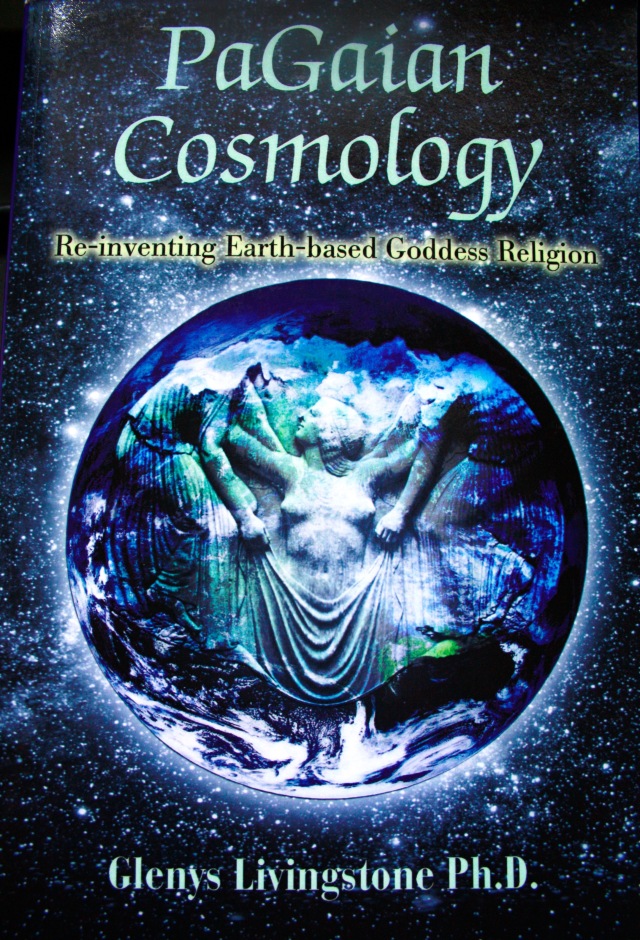by Glenys Livingstone Ph.D. (2008)

Photo: Glenys Livingstone, Radha 2012
“Gender” might be described as “one’s perception of oneself” as being either female or male, and “sex” as “the physical appearance of one’s body” as either female or male1. The “sex” of a body is commonly understood necessarily to be able to fall into one or the other designation, and if it does not then life, within many cultures, is almost certain to be traumatic for the being involved.
Within Western culture of more recent centuries at least, and within many other global social/religious contexts, no shades of “grey” have been allowed in this matter, no kaleidoscope – as is allowed in almost all other dualities. This rigid polarization of sex has not been so for many indigenous traditions – even still today: there is often much more fluidity about the significance of sexual physical appearance. Within my own Western culture, “gender” is commonly understood to “ideally” be in alignment with the “sex” of one’s body, and that’s where categories such as “feminine” and “masculine” are entered into.
“Feminine” and “Masculine”
I often hear in conversations and read in publications that these two must be integrated within, as if they are distinct known qualities. But what is “masculine”? What differentiates it from “feminine”? … power? vigor? efficiency? order? left brain capacities? … these are qualities attributable to Goddesses of all cultures, so why masculinise them? It seems to me that “masculine” and “feminine” are both inventions from a time in the human story when the male came to be perceived – to perceive himself? – as separate from the Mother Goddess of us all. She embodies all qualities. We are all born of Her. His separation is referred to in stories like the Epic of Gilgamesh where he refuses the Goddess and prefers the heroics of battle, or in the Enuma Elish where Marduk murders Tiamat, or in the GreekOresteian Trilogy where matricide is no longer a crime.

Radha and Krishna
What is “feminine”? Is it “femality”, a word which I feel might refer to the female form more clearly? Perhaps “feminine” was meant to pertain to the female form, but what does the female form mean? The female form has both experience and cultural stories that vary. The female body has the capacity to bear and birth new beings; the resultant engagement may give rise to “maternal thought”2 or a “Mother-mind”, focussed on regeneration: that is, a cultural focus on the nurturance of an “other” who is not actually separate from one’s self (hmmm … sounds to me like a very deep spiritual discipline). Any male (or another female or any diversely sexed being) may participate in that Mother-mind – and many do, and apparently have, throughout the eons – by supporting regeneration: living lives that support this cultural focus. There is evidence in story and images from around the globe that this occurs – whole communities of women and men, as well as gallant individuals, who support the focus on regeneration. Thus imagery and stories of the male may be within that life-enhancing metaphor (for example, the Green Man of Old Europe).
Surely the term “masculine” was meant to pertain to the male form, and/or perhaps to the nature of some tasks that men may carry out within a culture. The male form has both experience and cultural stories that vary. Adding to the complexity of such categorization is the fact that for the last few millennia at least, female physical processes have been particularly de-valued – their potency forgotten, whilst male physical processes have been associated with a false kind of potency – locked off from subjective participation in a relational cosmos.
“Masculinity” and “femininity” are largely cultural developments – developed over time by story, belief systems, even the foods each sex have been allowed to eat in some cultures, the activities they each have been allowed, so that certain styles, physical and psychic, have been bred into and out of maleness and femaleness to suit the mindframe. “Maleness” and “femaleness” on the other hand may be something quite different and more like a physical kaleidoscope: and it was a very creative move at a relatively recent point in the evolutionary story …”3
Long before sex arose in the story of the Universe, Creativity proceeded: sexually differentiated bodies were not required for most of the story of Creativity, albeit a splendiferous complexifying move for Cosmogenesis4. There would seem to be deeper dynamics of potency and desire that each being participates in, and that may be brought to the forefront in discussions of sex/gender. How might we make our way through the stereotypes to an ease with powerful sexed being of various kinds? I don’t think it is achieved by an erasure of the body differences – a kind of homogenisation…




